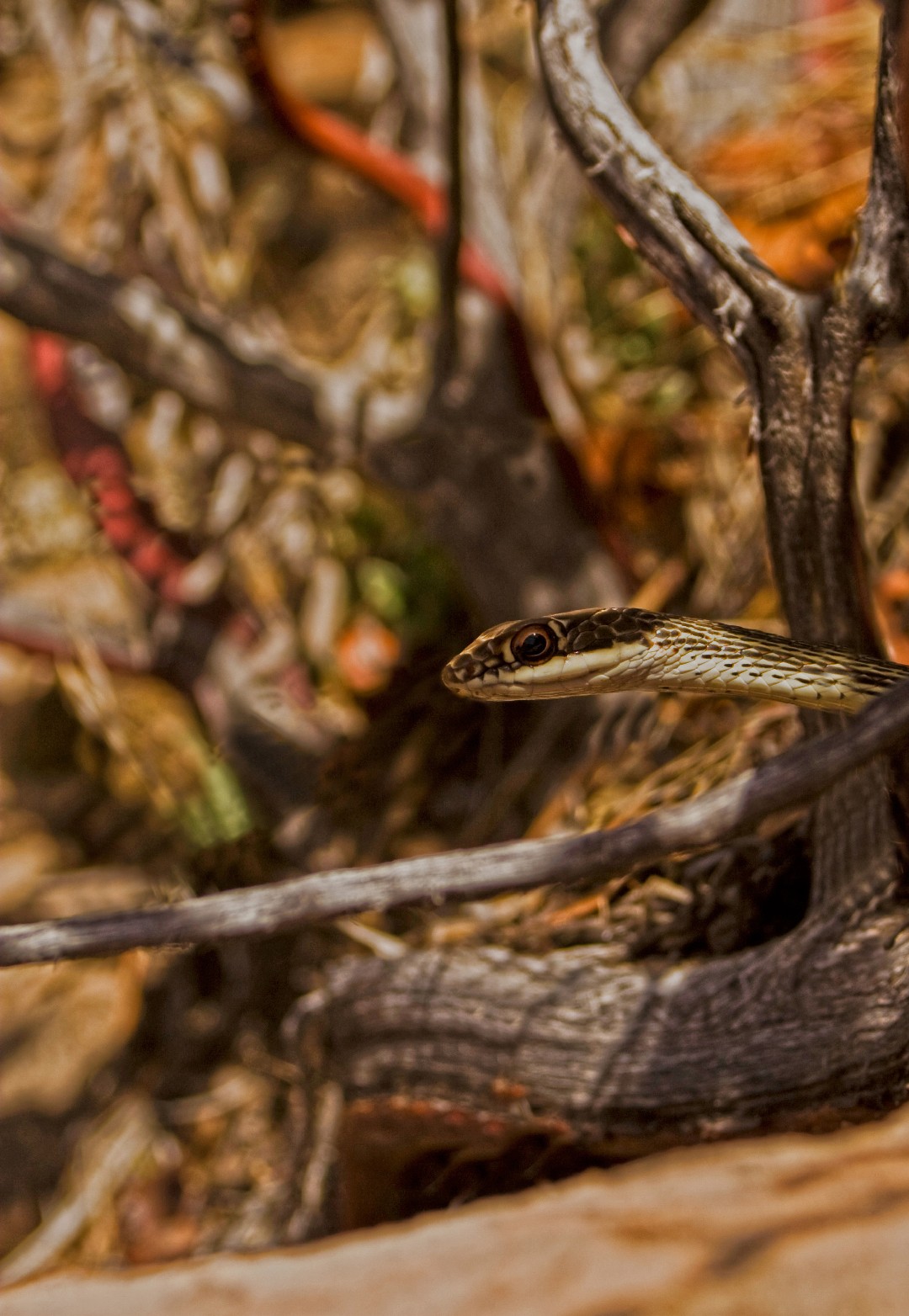Central texas whipsnake
A species of Eastern racers Scientific name : Coluber taeniatus Genus : Eastern racers
Central texas whipsnake, A species of Eastern racers
Scientific name: Coluber taeniatus
Genus: Eastern racers
Content
Description General Info
 Photo By Zion National Park , used under PUBLIC-DOMAIN /Cropped and compressed from original
Photo By Zion National Park , used under PUBLIC-DOMAIN /Cropped and compressed from original Description
The central texas whipsnake is a very large, non-venomous snake that originates in the Southwestern United States and northern Mexico. An alert and active hunter, this snake hunts during the day. It has a wide array of prey, including small mammals, birds, frogs, snakes, lizards, and rodents. It spends most of its time sheltering in burrows or under rocks, but it’s often seen on trees and shrubs as well. 
General Info
Lifespan
9-15 years
Diet
Central texas whipsnake predominantly feeds on amphibians, particularly frogs and toads. It also includes small mammals and birds in its diet, demonstrating opportunistic feeding tendencies.
Appearance
Central texas whipsnake is a long, slender creature with smooth, shiny scales. It sports a distinctive pattern of stripes or blotches, primarily in varying shades of brown. Adults tend to possess darker coloration compared to juveniles. As a species of snakes, central texas whipsnake also has a forked tongue and lacks visible limbs. The striking, distinguished appearance of this creature is often noted by researchers.
Behavior
Central texas whipsnake is characterized by a sedentary, solitary lifestyle, often preferring to stay within a well-defined territory. Typically nocturnal, it actively forages for prey under the cover of night. Notably, it exhibits strong defensive behaviors when threatened, using rapid lateral movements to startle and deter predators.
Scientific Classification
Phylum
Chordates Class
Reptiles Order
Lizards and snakes Family
Colubrids Genus
Eastern racers Species
Central texas whipsnake